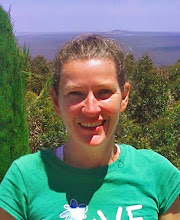WHY ARE
OUR BABIES
BEING
BORN FULL OF
CHEMICALS?
CHEMICALS?
I
recently watched a talk by the EWG (Environmental Working Group)
called The 10 Americans. The EWG tested the umbilical cord
blood of 10 newborn babies and found nearly 300 chemicals, including
BPA, fire retardants, lead, polychlorinated biphenyls (PCBs) and
pesticides that were banned more than 30 years ago.
As
a mum with two boys, and a baby on the way, this topic is very close
to my heart.
I
do my best to reduce the amount of chemicals coming into our home and
our bodies and am always looking for ways to do more, through the
food we eat and the other household products we use, but despite my
best efforts, my children and my unborn baby are already full of
chemicals. So many kids these days are sick with food allergies and
intolerances, cancer, eczema and asthma, learning difficulties and
behaviour problems as a result of harmful chemicals.
I
used to think that if something was
sold in a shop then it would have to be safe. Surely the government
wouldn’t allow companies to sell products containing ingredients
that could make us sick? I have since discovered that many of the
food and household products used and consumed every day are toxic and
making us sick. A law that was supposed to protect us,
the Toxic Substances Control Act, passed in 1976, failed with no
authority to ensure the safety of chemicals before they are added to
products. As a result, the chemical industry has continued to add
more and more chemicals into our products each year.
Contamination
from toxic chemicals is everywhere. On our couches, lotions,
household cleaners, toys, building materials, canned foods and more
contain chemicals known to harm human health.
Infants
and children are more vulnerable to the toxins from pesticide
residues and environmental chemicals. This is because of their
larger intake of food per kilo of body weight. Also, as their bodies
and critical organs are still in developmental stages, they are more
susceptible to pesticide toxicity.
If
we can reduce the amount of toxic chemicals we use on and in our
bodies and our homes, we and our children will be happier and
healthier and future generations will thank us for stopping this
vicious cycle which is destroying our bodies and our planet.
Take
the time to watch this 20 minute talk now:
What
can you do:
- Sign the EWG's petition to demand that Congress take action to make chemicals in consumer products kid-safe
- The EWG has put together some great resources on how to keep you and your family safe from harmful chemicals
- Connect with other like minded people and share your tips and ideas for creating a healthy home and your recipes for growing healthy bodies




